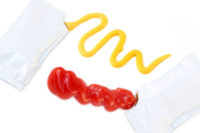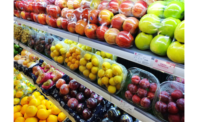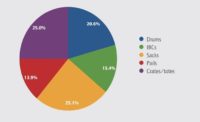In the last 40 years, food waste has doubled per person, costing the average family $2,000 each year.[1] More than half of this waste occurs in households and poorly-designed packaging is one of the primary culprits. Consumers are generally unaware of how packaging affects food waste. What they do know, however, is that they want their food products to stay fresh tasting and safe to eat for as long as possible. Fortunately, packaging technologies that help maintain freshness and extend shelf life are helping brands better meet these consumer demands. In striving to ensure their products are adored, not abandoned, brands must have a deep understanding of the market application, be knowledgeable of alternative packaging formats, utilize proper barrier properties and take advantage of the latest options in reclosability.
Understanding – and educating – your market
Understanding your market is essential in providing a product that is optimal in preventing food waste while also meeting consumers’ desires of convenience, portability, sustainability, and quality. Generally, shoppers believe that food packaging has more to do with safety than keeping food fresher for longer – which is why education on packaging is especially important. According to a Harris Poll on Consumer Waste, 89% of consumers believe that the packaging material is more detrimental to the environment than the actual food waste[2]. However, food waste in landfills produces large amounts of methane, which can have highly damaging effects on the environment. Still, the clear message to consumers is that reducing food waste means saving money. Consumers should be educated on the packaging that they purchase in terms of how to properly store and maintain food rather than assuming that it’s better to transfer food to a different container to maintain freshness. Fifty-six percent of consumers prefer to buy a food product in packaging that delivers a longer shelf life over another product that is not packaged for longevity[3]. Additionally, consumers are increasingly turning away from foods with preservatives, so in order to keep with these trends, organic foods now have to maintain freshness through its packaging to prevent food waste. Knowing what consumers want and educating them on what helps reduce food waste is beneficial in appealing to broader audiences.
Staying flexible
Flexible packaging is on the rise. Not only do consumers and brand owners prefer it for its space saving, portable, and efficiency attributes, but recognize its role in preserving food. Producers are turning to this packaging because it is ideal for companies looking to down gauge materials.
Downgauging reduces plastic consumption, which is ultimately, a more eco-friendly approach to packaging – as long as the product is adequately protected. This effort to minimize material can be leveraged in promotions to consumers, who increasingly appreciate brands for demonstrating environmental responsibility. Moreover, downgauging appeals to food brands that benefit greatly from substituting flexible materials instead of using rigid packaging. Flexible materials reduce shipping and packaging costs, according to the Flexible Packaging Association[4], it would take 26 truckloads to transport unfilled glass jars as opposed to the one truck that could transport the same amount in unfilled flexible packages. That same study revealed that 60 pounds of a beverage would take 50 pounds of glass to package as opposed to 1.5 pounds of flexible packaging. The reduction of energy used in flexible packaging is immense, in fact, the Flexible Packaging Association states this packaging uses around 88% less fossil fuels to produce than rigid packaging[5]. Substituting this packaging is clearly not only beneficial economically, but environmentally.
The sustainability and convenience afforded by flexible pouches is gaining traction with consumers. While glass and other rigid packaging can certainly have charm, many brand owners are trading in the “old-fashioned” feel of rigid packaging for this flexible packaging that 34% of consumers view as modern[6]. These are the same consumers that value portability so when eating on-the-go is a priority, many Americans are interested in packaging that allows them to do just that[7]. Single-serve packaging also goes hand-in-hand with portability since it is easy for consumers to simply grab-and-go and offers greater opportunities for portion control. Making smaller packaging is easier with flexible materials as it allows for more appropriately sized containers as opposed to rigid. Consumers are even willing to pay more for this right-sized packaging as they believe it reduces food waste from not having an excess amount of food than what is required[8]. Consumers are even buying single-serve flexible packaged food for their dogs, which fits nicely into the life styles of active, on-the-go consumers who prioritize convenience and portability.
The substitution of rigid packaging for more flexible formats has become a more obvious choice for manufacturers, as the switch provides brands with a win-win solution for a superior product experience for consumers.
Examining barrier properties
However, even the most uniquely convenient packaging is not worth much if it doesn’t properly protect the product from the elements to keep it fresh from the first serving to the last. Flexible pouches can protect products substantially more against oxygen than rigid packaging and significantly reduce food waste. A RMIT University Report showed that oxygen greatly decreases the lifespan of food by reducing its nutritional value and flavor, changing its appearance, and allowing it to become more prone to bacteria[9]. In rigid packaging, users don’t have the option to remove oxygen before sealing it in-between uses. A significant amount of consumers decide freshness on how the food looks than by the actual expiration date. Mintel’s Global New Products Database states that 38% would prioritize a food product over another if that packaging had a clear barrier to view its contents[10]. The same study showed how this type of packaging has been on the rise since 2013, now accounting for 12% of all new U.S. carbon-based product launches. Packaging with barrier technologies that mitigate the effects of oxygen, moisture and light keep food fresher for longer. The barriers thin multilayers prevent food waste that can be caused by these elements by maintaining conditions that do not promote bacterial growth[11]. The UV or partial light barrier is essential in preventing any alterations to color, nutritional value, or taste that light causes. Humidity and moisture can deteriorate or soften food making it unappetizing. The damaging effects on product performance from outside elements can be reduced with barriers properties that provide security and the least amount of contamination to food.
Reclosability
Having the option to reseal your food package is not only convenient, but necessary to preserve quality and freshness by giving consumers the opportunity to seal without letting air or contaminants in. Coffee packaging is a great example of how reclosability can lengthen product life cycle as coffee can lose flavor and aroma from oxygen exposure. The quality of the coffee beans can also deteriorate from this exposure[12], reducing the value and experience you expect from the product.
A resealable package also eliminates transferring the product to another container after it is first opened. Doing this will also reduce waste potentially caused by that consequent packaging such as sealable storage bags or foil paper. Therefore, consumers can keep the original, sealable, branded packaging throughout the product lifecycle. Avoiding this transfer is particularly appealing to consumers as 81% would choose resealability over packaging that doesn’t have this option, and even 54% would pay more for this type of packaging[13]. Reclosability offers an opportunity for consumers to reduce food waste and for brands to provide the freshness and quality at the beginning of the consumers experience with the product to its very end.
One more step
For brand owners looking to make the switch to flexible packaging and join the industry-wide effort to prevent food waste, there is one last critical consideration: select the right suppliers and engage them early in your company’s product development stages. An early start and open communication are the keys to success in making a smooth transition to a flexible format that will seal in freshness and reduce food waste for better brand appeal. Ensure your partners understand your markets and are excellent listeners and capable of meeting your downgauging and other design needs. By anticipating challenges around product ingredients, supply chain activity and environmental concerns early on for a package that effectively protects the product, brands can build stronger consumer loyalty.
Founded in 1956 and headquartered in Atlanta, GA, Printpack is a privately held manufacturer of flexible and specialty rigid packaging. Employing over 3,200 associates worldwide, the company operates 21 manufacturing facilities in the United States, Mexico and China. By combining our unique insights into consumer preference with advanced technological capabilities, Printpack can heighten brand recognition and help capture market share. Learn more at printpack.com.
[1]Hower, Mike. "Harris Poll: Americans More Worried About Food Waste Than Air Pollution." Sustainablebrands.com. 17 July 2014.
[2]Hower, Mike. "Harris Poll: Americans More Worried About Food Waste Than Air Pollution." Sustainablebrands.com. 17 July 2014.
[3] http://www.mintel.com/press-centre/food-and-drink/reduce-reuse-or-recycle-half-of-americans-prefer-to-buy-foods-with-minimalno-packaging-in-order-to-reduce-waste
[4] https://www.flexpack.org/sustainable-packaging/
[5] https://www.flexpack.org/assets/1/6/FPA_sustainability_brochure2.pdf
[6] Mintel’s 2016 Global Packaging Trend Phenomenal Flexibles
[7] http://www.mintel.com/press-centre/food-and-drink/reduce-reuse-or-recycle-half-of-americans-prefer-to-buy-foods-with-minimalno-packaging-in-order-to-reduce-waste
[8] Hower, Mike. "Harris Poll: Americans More Worried About Food Waste Than Air Pollution." Sustainablebrands.com. 17 July 2014.
[9] Verghese, Karli, Dr., and Helen Lewis, Dr. The Role of Packaging in Minimising Food Waste in the Supply Chain of the Future. Rep. Centre for Design, RMIT University. Vol. 3. N.p.: CHEP Australia, June 2013.
[10] http://www.mintel.com/press-centre/food-and-drink/reduce-reuse-or-recycle-half-of-americans-prefer-to-buy-foods-with-minimalno-packaging-in-order-to-reduce-waste
[11] Verghese, Karli, Dr., and Helen Lewis, Dr. The Role of Packaging in Minimising Food Waste in the Supply Chain of the Future. Rep. Centre for Design, RMIT University. Vol. 3. N.p.: CHEP Australia, June 2013.
[12] http://www.coffeeanalysts.com/coffee-packaging-staling-issues/
[13] http://www.mintel.com/press-centre/food-and-drink/reduce-reuse-or-recycle-half-of-americans-prefer-to-buy-foods-with-minimalno-packaging-in-order-to-reduce-waste



